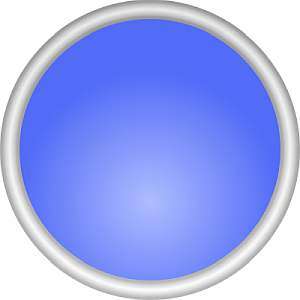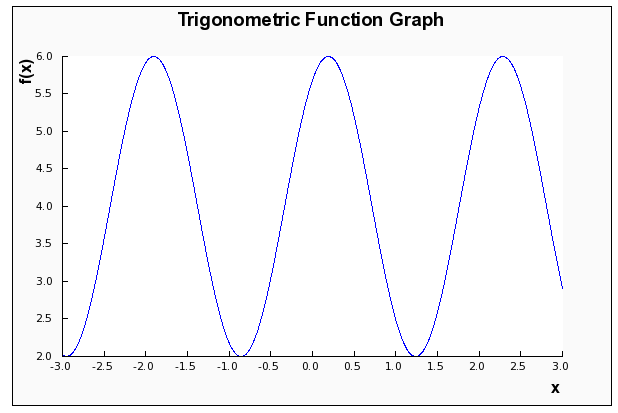Area of a Sector Formula
Instructions: Use this calculator to compute the area associated to a sector of a circle, by specifying its radius r and the angle that defines this sector, showing all the steps. Please type in the radius and angle the boxes below.
More on this area of a sector calculator
This calculator will compute the area of a sector of a circle, showing all the steps. All you need to do is provide a valid radius and angle. The radius can be any positive numeric expression, whereas the angle can be represent anything between 0 and the full circle, either in radians or degrees.
If you choose to use degrees, the angle can range between 0o and 360o, whereas if you choose radians, the angle can range between 0 and \(2\pi\).
Once you provide a valid radius and angle, you can click on "Calculate", and you will be provided with all the steps of the process required to compute the corresponding sector area, using a suitable formula.
Sectors can be seen as the "slices of pizza", where the circle is the full pizza, and the sector is a pizza slice. Also, it is clear that the larger the pizza is (bigger radius), the larger the slides are, and the larger the opening of the slice is, the larger the slice.

How to use the area of a sector formula?
The area of sector will be based on the area of circle formula, when considering the whole circle.
- First, in order to give a formula for the area of a sector, we need to distinguish two cases: the angle is given in radians, or the angle is given in radians.
- Assume that the angle α is given in degrees, and let A be area of the corresponding sector, and r be the radius. We have the following direct proportion:
\[\displaystyle \frac{\alpha}{A} = \displaystyle \frac{360}{\pi r^2} \]This direct proportion is saying that the area of the sector is directly proportional to the angle. Solving for A, we get
\[\displaystyle A = \displaystyle \frac{\pi r^2\alpha}{360}\]- Assume that the angle α is given in radians, and let A be area of the corresponding sector, and r be the radius. We now have the following direct proportion:
\[\displaystyle \frac{\alpha}{A} = \displaystyle \frac{2\pi}{\pi r^2} \]This direct proportion is saying that the area of the sector is directly proportional to the angle. Solving for A, we get
\[\displaystyle A = \displaystyle \frac{r^2\alpha}{2}\]What are the steps for calculating the area of a sector?
- Step 1: Identify the angle that is provided, and very importantly, determine whether the angle is given in degrees or radians
- Step 2: If the angle α is given in degrees: Use the formula \(\displaystyle A = \displaystyle \frac{\pi r^2\alpha}{360}\)
- Step 3: If the angle α is given in radians: Use the formula \(\displaystyle A = \displaystyle \frac{r^2\alpha}{2}\)
Observe that if r come with length units, the area A will have the square of those units. For example, if the radius is given in inches, the area will be in inches2.
What is represented by the area of a sector of a circle?
The big question is what does the area of a sector mean. In this case, the interpretation is simple: the area of sector is the magnitude of that sector, in terms of its extension, something like like geometric sense of area.
Is this Sector Area Calculator the same as the area of a circle?
It is not the same, but in many ways it is very similar and uses the same ideas. For example, the area of a sector will be a portion of the total area of the corresponding full circle.
What portion will that be? Well, exactly the portion the angle respect to the full circumference.For example, if the sector has an angle that is one quarter of the full circumference (90 degrees), then the area of the sector will be exactly one quarter of the full area of the circle).
Why would deal with areas of sectors?
Sectors are tightly related with angles in degrees and radians, and it is very common that you need to deal with them in geometry, and there are a handful of interesting mathematical results associated to them.
The idea of area of sectors related to the size of a pizza slice should be enough to be interested, huh?

Example: Area of a sector
Find the area of a sector corresponding to an angle of \(\alpha = \pi\) radians, with a radius of r = 3.
Solution: We need to find the area of a sector. The information we have is that the radius is \(r = 3\), and the sector is defined by an angle of \(\alpha = \pi\) radians.
Let \(A\) be area of the corresponding sector, and \(r\) be the radius of the circle. We have the following direct proportion:
\[\displaystyle \frac{\alpha}{A} = \displaystyle \frac{2\pi}{\pi r^2} \]This direct proportion indicates the area of the sector \(A\) is in direct proportion to the angle of the sector. We can solve for \(A\), and we get
\[ A = \displaystyle \frac{r^2 \alpha}{2}\]Now, all that is left to do is to plug in the known values of the radius and angle, so we get:
\[ \begin{array}{ccl} A & = & \displaystyle \frac{r^2\alpha}{2} \\\\ \\\\ & = & \displaystyle \frac{(3)^2 \cdot \pi}{2} \\\\ \\\\ & = & \displaystyle \frac{9}{2}\pi{} \end{array} \]This concludes the calculation. We have found that the area of the corresponding sector of the circle is \(\displaystyle A = \frac{9}{2}\pi{}\).
Example: Calculating the area of a sector
Now, calculate the area of a sector for a circle with radius r = 2, and an sector angle of \(\alpha = 45\) degrees
Solution: We need to find the area of a sector. The information we have is that the radius is \(r = 2\), and the sector is defined by an angle of \(\alpha = 45\) degrees. So in this case the angle is provided in degrees.
Let \(A\) be area of the corresponding sector, and \(r\) be the radius of the circle. We have the following direct proportion:
\[ \displaystyle \frac{\alpha}{A} = \displaystyle \frac{360}{\pi r^2} \]This direct proportion indicates the area of the sector \(A\) is in direct proportion to the angle of the sector. We can solve for \(A\), and we get
\[ A = \displaystyle \frac{\pi r^2 \alpha}{360} \]Now, all that is left to do is to plug in the known values of the radius and angle, so we get:
\[ \begin{array}{ccl} A & = & \displaystyle \frac{\pi r^2 \alpha}{360} \\\\ \\\\ & = & \displaystyle \displaystyle \frac{\pi \cdot (2)^2 \cdot 45}{360} \\\\ \\\\ & = & \displaystyle \frac{1}{2}\pi{} \end{array} \]This concludes the calculation. We have found that the area of the corresponding sector of the circle is \(\displaystyle A = \frac{1}{2}\pi{}\).
Example: Another calculation
What is the area of the sector when the angle is \(2\pi\) radians.
Solution: In this case, \(2\pi\) radians corresponds to the full circle, so the area is the same as the area of the circle, \(A = \pi r^2\).
More circle calculators calculators
Sectors are tightly associated with angles in degrees and radians, and naturally so, because sectors are defined by the magnitude of the opening, which is exactly what angles measure.
One special case of an area of a sector is the full area of a circle, in which the sector angle includes the whole circumference.




